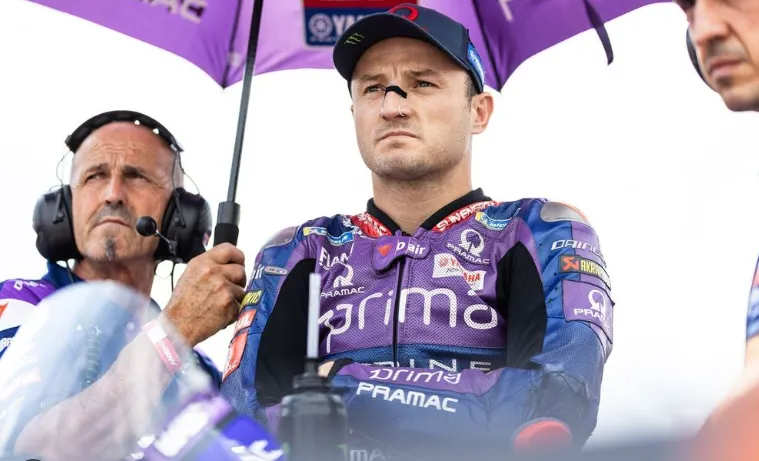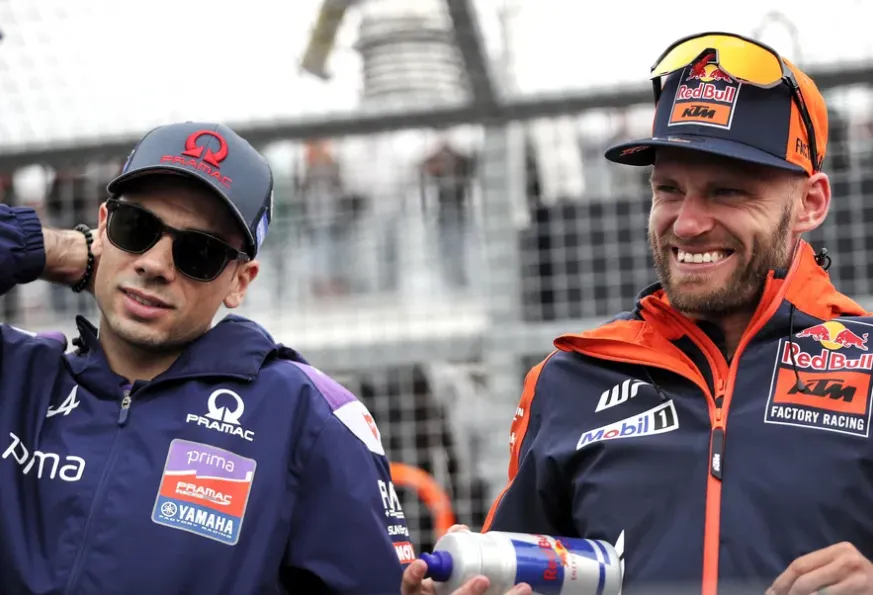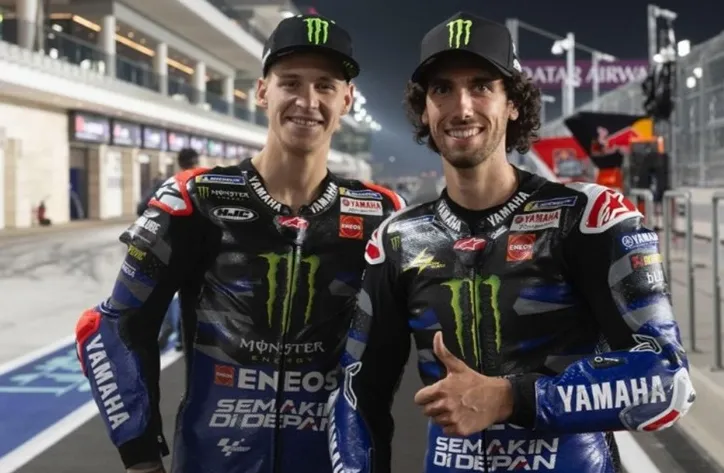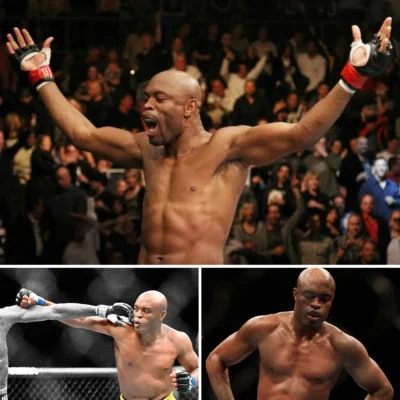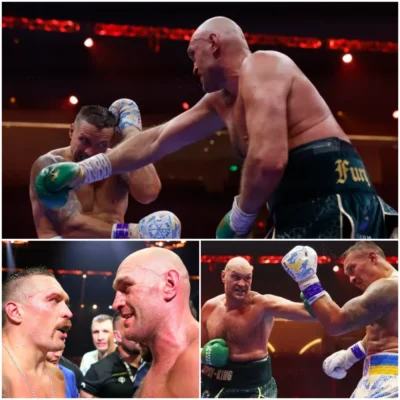
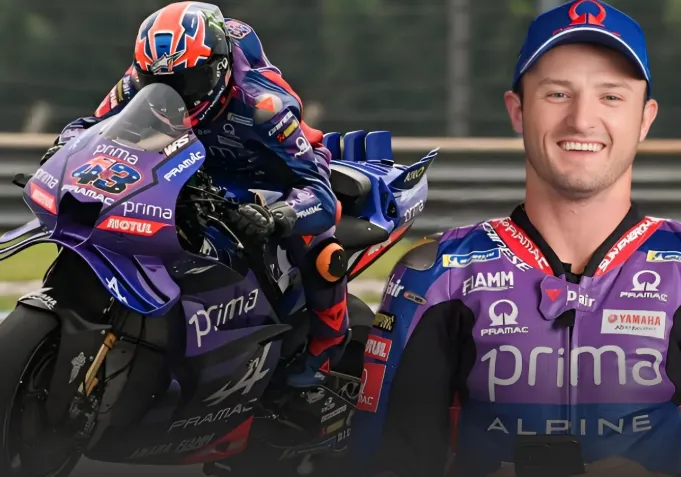
Jack Miller Vows to Bring Yamaha Back to the Pinnacle of MotoGP: Can the YZR-M1 Regain Its Glory with New Ideas from Japan?
As the 2025 MotoGP season gains momentum, one of the most talked-about storylines isn’t just about the title race—it’s the bold declaration from Jack Miller, who has vowed to bring Yamaha back to the pinnacle of MotoGP. The charismatic Australian has joined the Yamaha factory team at a time of rebuilding, and his arrival could be a turning point for a manufacturer once considered the gold standard in the sport. With the YZR-M1 facing intense scrutiny, the question now is: can Miller’s energy, aggressive riding style, and the infusion of new ideas from Japan really restore Yamaha to its former dominance?
Jack Miller’s Mission: Reviving a Sleeping Giant
Jack Miller’s transition from KTM to Yamaha for the 2025 season was met with a mix of excitement and skepticism. Once a title contender and consistent podium threat, Miller’s career appeared to be plateauing. But his decision to take on Yamaha’s struggling project reveals a rider hungry for legacy-defining success.
Miller’s message to the media and fans was clear during pre-season testing:
“I didn’t come here just to ride around. I came to bring this team back to the top. The YZR-M1 has potential—it just needs the right push and the right mindset.”
That confidence is exactly what Yamaha needs. Over the past few years, the team has endured a painful decline in results, with issues ranging from engine reliability and lack of top-end speed to rider dissatisfaction and internal miscommunication. Gone are the days of Valentino Rossi and Jorge Lorenzo dueling for titles aboard the M1. Now, with Miller at the helm, Yamaha is embarking on a major transformation—with hopes pinned on his ability to bridge the gap between talent and technical innovation.
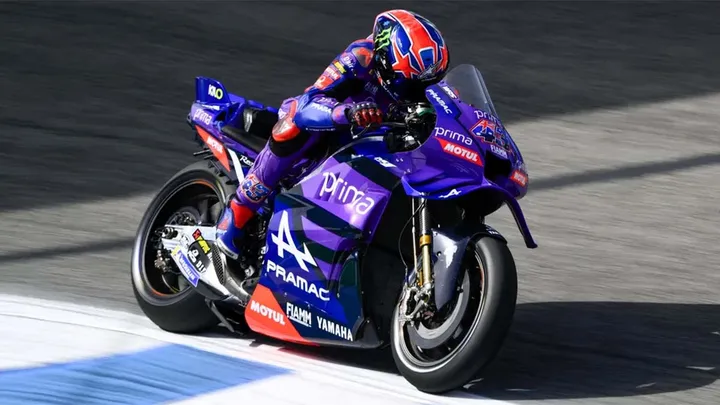
YZR-M1’s Struggles: From Champion to Chaser
The fall of the YZR-M1 from MotoGP supremacy has been both gradual and frustrating. Once the most balanced bike on the grid, known for its agility, braking stability, and precision cornering, the M1 has fallen behind its European rivals. Ducati, Aprilia, and KTM have leapfrogged Yamaha in innovation, leaving the Japanese giant to play catch-up.
In recent seasons, Yamaha’s main weaknesses have included:
-
Insufficient horsepower compared to Ducati’s Desmosedici
-
Aerodynamic limitations that have affected straight-line speed and high-speed stability
-
Rear grip issues and acceleration problems off slow corners
-
A development gap between the factory in Iwata and the European-based competition
These flaws led to inconsistent performances, rider exits, and fan disappointment. Even Fabio Quartararo, Yamaha’s 2021 world champion, struggled to extract consistent results from the outdated package. Now, with Jack Miller stepping in, there is renewed hope that the M1 can be revived—not just with horsepower, but with a fresh philosophy and aggressive development culture.
New Ideas from Japan: Redefining Yamaha’s Philosophy
At the core of Yamaha’s resurgence strategy is a shift in how they approach bike development. Historically conservative in their upgrades, Yamaha has acknowledged the need to change, both culturally and technically. This is where Jack Miller’s feedback and style become crucial.
In the off-season, Yamaha made several significant changes:
-
They formed a new tech alliance between Iwata engineers and a European-based satellite team to speed up testing and feedback loops.
-
A revised engine spec with increased top-end power debuted during winter testing, reportedly closing the gap to Ducati by over 10 km/h.
-
They introduced an updated aerodynamic package, including new winglets and revised fairing shapes designed to improve corner exit and stability.
-
A new electronics department was created in collaboration with a leading Japanese university, aiming to optimize traction control, ride-height devices, and launch systems.
All of these changes are being filtered through Jack Miller, who has never been shy about giving direct, no-nonsense feedback. His riding style—aggressive on the brakes, willing to slide the rear, and fearless in overtakes—is in stark contrast to Yamaha’s historically smooth and flowing design approach. That conflict may actually be Yamaha’s biggest strength in 2025.
Jack Miller’s Adaptation: Aggression Meets Precision
One of the most intriguing storylines of the 2025 season is how Jack Miller adapts to the YZR-M1, and vice versa. The M1 has always favored corner speed and precision over brute power and sliding techniques. Riders like Jorge Lorenzo and Fabio Quartararo thrived by being smooth, deliberate, and methodical.
Miller, by contrast, built his career on hustle—late braking, hard charging, and improvisation. The early test results show a mixed picture. While Miller admitted the bike still lacks the “explosiveness” of the KTM or Ducati, he also praised its cornering ability and front-end confidence.
“It’s different, for sure,” Miller said. “You can’t just chuck it in and expect it to grip like the KTM. But once you get in sync with it, the M1 does things no other bike can.”
Miller’s goal isn’t to change the M1 into a Ducati clone—but to merge his style with Yamaha’s DNA, creating a hybrid that is capable of winning. The team has given him full control over setup changes and development feedback, a move that signals just how much trust Yamaha is placing in their new star.
The Psychological Battle: Restoring Belief in the Garage
Perhaps the most underrated part of Miller’s impact will be psychological. Over the past few seasons, the Yamaha garage has struggled with internal morale. Rider turnover, disappointing results, and public frustration have created a culture of doubt.
Miller, known for his humor, openness, and grit, is already infusing positive energy into the garage. His relationship with engineers and mechanics is reportedly excellent, with a transparent and high-energy working style that is rare in such a pressure-filled environment.
Team manager Massimo Meregalli commented:
“Jack brings not only experience but belief. He talks about winning—not top 10s. That attitude is contagious.”
If Yamaha can build on this culture shift, they may begin to recover the intangible confidence that once made them a title-winning machine.
What Would a Yamaha Revival Mean for MotoGP?
The potential resurgence of Yamaha in MotoGP would have wide-ranging implications for the sport. For starters, it would reignite the Japan vs. Europe rivalry, which has shifted heavily toward the latter in recent years. Ducati, KTM, and Aprilia currently dominate the top positions, leaving Yamaha and Honda scrambling for relevance.
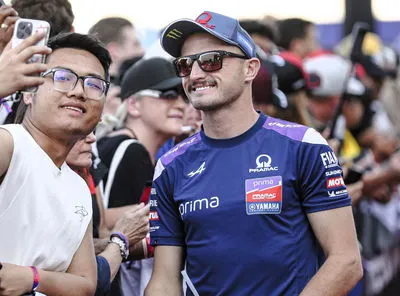
A competitive Yamaha would also restore balance to the rider-market dynamics. With a top-tier bike, Yamaha could retain and attract elite talent, stabilizing its lineup and offering a true alternative to the Ducati-centric grid.
Most importantly, it would re-engage a global fanbase that has remained loyal despite recent struggles. Yamaha’s international identity—combined with the charismatic appeal of Jack Miller—makes them one of the most marketable teams in MotoGP. If results improve, sponsorships, audience engagement, and media attention will follow.
The Road Ahead: Risks, Rewards, and Reality
No MotoGP project turns around overnight. For all of Miller’s ambition and Yamaha’s innovation, the reality is that closing the performance gap to Ducati and KTM will take time. Reliability remains a concern, and track conditions during early rounds may mask deeper issues.
However, what’s different in 2025 is the tone from inside Yamaha. There is belief. There is fight. There is a willingness to listen, adapt, and challenge long-held traditions. Jack Miller is not a miracle worker—but he is the perfect disruptor.
If Yamaha can consistently reach the podium by mid-season and secure at least one win by year’s end, it will validate the entire effort. And if they fall short, they now have a rider and a development model bold enough to keep pushing.
Conclusion: Can Jack Miller and Yamaha Shock the MotoGP World?
Jack Miller’s vow to return Yamaha to the pinnacle of MotoGP is more than just hype—it’s a bold mission statement backed by hard work, technical overhaul, and emotional investment. With the YZR-M1 undergoing significant transformation, and a motivated rider leading the charge, Yamaha’s revival no longer feels like wishful thinking. It feels possible.
As the season unfolds, the world will be watching—corner by corner, lap by lap—to see whether this ambitious comeback can shift the MotoGP power structure. One thing is certain: Jack Miller didn’t come to Yamaha to settle. He came to win.








